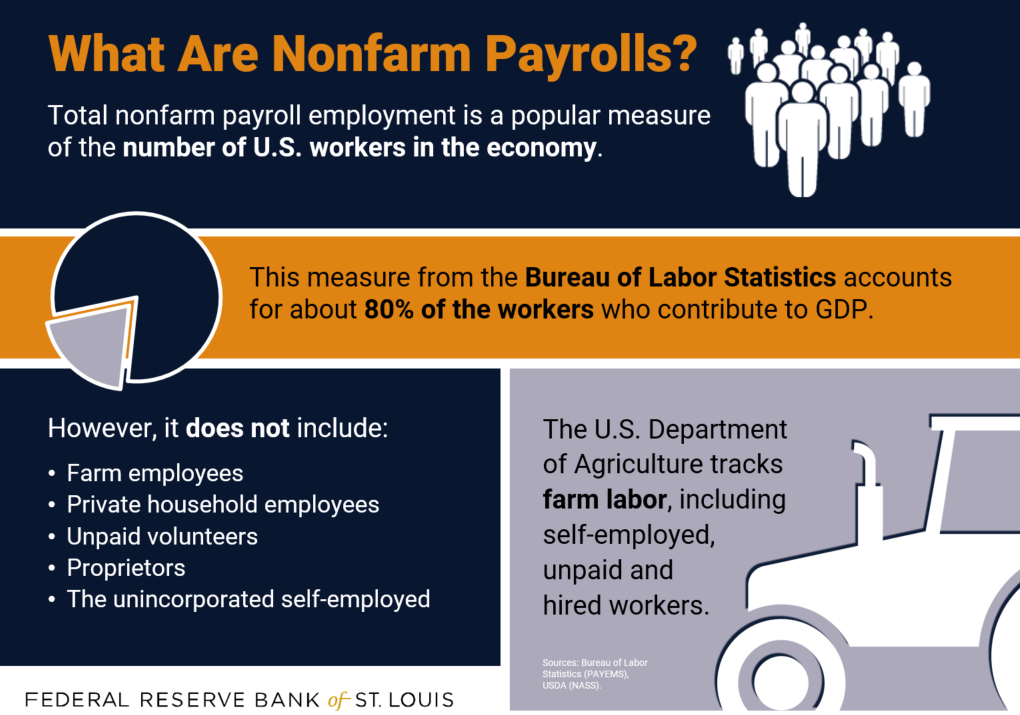Nonfarm Payrolls: Why Farmers Aren’t Included in Jobs Data
Common employment data are released regularly by the Bureau of Labor Statistics to shine a light on the economy, highlighting jobs that were added and those that were lost. Followers of the BLS’ monthly jobs report may feel excitement when employment increases, or dismay at the sign of increased unemployment.
But the Current Employment Situation report excludes a section of the American workforce: farmers.
Why Do We Use Nonfarm Payroll?
As seen in the graph below, the monthly data from the U.S. Bureau of Labor Statistics is listed as “All Employees: Total Nonfarm Payrolls.” It measures the number of U.S. workers in the economy, excluding proprietors, private household employees, unpaid volunteers, farm employees and the unincorporated self-employed.
So, why nonfarm? Why aren’t farmers included in monthly jobs data? The answer may go back to early America. Highly seasonal, farming has always had a special place in our history—and our hearts.
FRASER, the St. Louis Fed’s digital library, is a great place to investigate history. According to Agricultural Labor Data Sources: An Update, a 1986 agriculture handbook found in FRASER:
The collection, dissemination, and use of agricultural labor data is complicated by several factors that relate to the structure of the agricultural industry and the characteristics of its workers. There is also considerable seasonal fluctuation in agricultural employment, with wide variations in peak employment by type of commodity and region. Thus, numerical estimates provided by agricultural employment data vary depending on time of collection and whether data refer to employment during 1 week or the entire year.
According to the handbook, obtaining accurate farming employment numbers is complicated by:
- Self-employment
- Unpaid family employment
- Part-time or hobby farmers
- Other partnerships
Plus, the handbook mentions another red flag related to farming: Agricultural labor data are affected by the unknown number of undocumented workers in the field—literally.
In addition, the BLS’ Current Employment Situation survey uses unemployment insurance administrative records, so workers not covered by such insurance are not captured. Since agriculture workers have several exemptions for unemployment insurance coverage, the sample size would be insufficient to calculate accurate estimates.
Where to Find Farm Employment Numbers
But fear not, those farming fanatics who are interested in such jobs statistics. The Department of Agriculture tracks farm labor: “The U.S. agricultural workforce has long consisted of a mixture of self-employed farm operators and their family members, and hired workers,” says the department’s Economic Research Service.
Perhaps not surprisingly, the number of workers needed to farm has been on the decline for decades, it says, “as rising agricultural productivity due to mechanization has reduced the need for labor.”
In the 1950s, there were almost 10 million U.S. farmworkers. But a recent farm labor report from the USDA, released May 2019, showed only 629,000 workers employed on U.S. farms and ranches.
That’s just a drop in the bucket from the latest BLS jobs report (released in June 2019, at the time of this writing), which showed total nonfarm payroll employment at more than 151 million people in the United States.
More to Explore
- For the latest numbers, see the Current Employment Situation news releases.
- Learn about Different Measures of Unemployment: Is There Just One Number to Watch?
This blog explains everyday economics and the Fed, while also spotlighting St. Louis Fed people and programs. Views expressed are not necessarily those of the St. Louis Fed or Federal Reserve System.
Email Us



